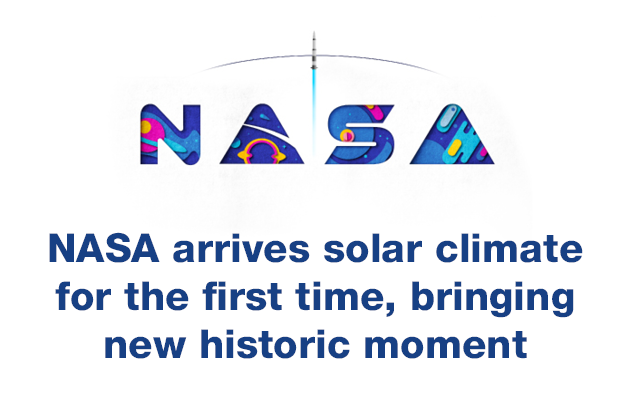A spacecraft dispatched by NASA has done what was once thought impossible. On 28 April, the Parker Solar Probe effectively entered the crown of the Sun, an outrageous climate that is around 2 million degrees Fahrenheit.
A scientific paper portraying the achievement was distributed in the Physical Review Letters.
The historic second was accomplished because of an enormous joint effort of researchers, scientist, and engineers, including individuals from the Center for Astrophysics, Harvard and Smithsonian (CfA) who assembled and screen a critical instrument on board the test: The Solar Probe Cup. The cup gathers particles from the Sun’s climate that assisted researchers with confirming that the shuttle had to be sure crossed into the crown.
Michael Stevens- an astrophysicist at the CfA who helps screen the cup, said, “The objective of this whole mission is to figure out how the Sun functions. We can achieve this by flying into the sun environment. “The best way to do that is for the shuttle to cross the external limit, which researchers call the Alfven point. Along these lines, an essential piece of this mission is to have the option to gauge whether or not we crossed this critical point.”
The crown is the peripheral layer of the Sun’s climate where solid magnetic fields tie plasma and keep stormy solar winds from escaping. The Alfven point is when sun powered breezes surpass a critical speed and can break free of the crown and the Sun’s magnetic fields. Before 28 April, the space shutter had been flying just beyond this point.
Michael stevens, said, “if you see at zoom photos of the Sun, once in a while you’ll see these bright circles or hairs that appear to break free from the Sun however at that point reconnect with it,”. That is the district we’ve flown into, a region where the plasma, climate and wind are magnetically stuck and connecting with the Sun.” According to information gathered by the cup, the shuttle entered the crown multiple times on April 28, at one point for as long as five hours.
CfA astrophysicist Anthony Case, the instrument researcher for the Solar Probe Cup, says the actual instrument is a mind-blowing accomplishment of engineering.
He also added, “The measure of light hitting the Parker Solar Probe decides how hot the shuttle will get. While a large part of the test is ensured by a heat safeguard, our cup is one of just two instruments that stick out and have no security. It’s straightforwardly presented to the sunlight and working at an extremely high temperature while it’s making these measurement, it’s exactly red-hot, with parts of the instrument at in excess of 1,800 degrees Fahrenheit, and shining red-orange.”
To keep away from deprivation, the gadget is built of materials that have high dissolving focuses, similar to tungsten, niobium, molybdenum and sapphire.
However, the accomplishment of the Parker Solar Probe addresses substantially more than mechanical advancement. There are numerous secrets about Earth’s nearest star that researchers are trusting the test can help tackle.
The Parker Solar Probe can assist better with seeing this large number of peculiarities as it keeps on orbit the Sun and take estimations and information for researchers to examine here on Earth.



